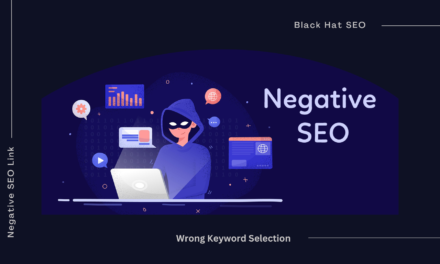Is subpar content adversely impacting your website’s “knowledge reputation”? Possibly. Could the culprit be older or outdated content? It’s a possibility. However, categorizing content as low-quality isn’t as straightforward as pinpointing its publication date. The dynamics are more intricate – Google explicitly emphasized this nuanced perspective following CNET’s extensive removal of outdated pages. Engaging in wholesale content pruning for SEO isn’t a magical solution that ensures an automatic boost in rankings for all surviving pages. The age of content on your website should not necessarily impede SEO performance, provided it maintains a standard of good quality. A prime example supporting this notion is observed in The New York Times. Continue reading to explore how to evaluate your content’s quality through an SEO lens and determine whether improvement or removal is the appropriate course of action.
High-quality content goes beyond merely addressing questions; it endeavours to solve problems and cater to the needs of your audience.
Additional characteristics of quality content include- Accuracy (i.e., Trustworthiness), Ease of Consumption, Helpfulness, Informativeness, Optimization for Search Engines, Originality and Shareability
While not every piece of content may embody all these attributes, exceptional content aspires to encompass as many of these qualities as feasible.
Conduct a thorough content audit to gain insights into the nature of your existing content. This evaluation process is essential for determining whether content requires updates or removal.
Develop a spreadsheet containing pertinent details about your content to provide directional guidance. Consider incorporating the following elements, which I have found to be particularly useful (though you may choose to include additional or different factors):
1. Title: Is it accurate? Can it be better optimized? Does it clearly benefit the reader?
2. URL: Is it SEO-friendly? Does it necessitate alterations (e.g., does the URL of an evergreen article contain a year)?
3. Author: Was the content authored by a subject matter expert or authority? Does the author still work for or have a relationship with your company? Can you reach out to the writer for updates?
4. Publication Date: More critical for content types that can or should be updated (excluding news).
5. Pageviews (historic vs. recent): Focus on identifying the worst-performing content or any that previously garnered substantial traffic but no longer does.
6. Word Count: Lower word counts might indicate potential quality issues. While Google asserts that word count doesn’t directly impact SEO, it could serve as a symptom of low quality, requiring further investigation.
7. Links: Assess whether your content has earned links from external sites. Additionally, evaluate the number of internal links pointing to the content.
8. Trust Flow and Citation Flow: Utilize Majestic metrics to gauge link quality and equity. Higher scores generally indicate better performance.
Word count is an interesting point to note. While Google suggests that it doesn’t directly influence SEO, it could still be indicative of potential quality issues. At this stage, it serves as a diagnostic tool, prompting further exploration.
The subsequent challenge involves reviewing your content and deciding on the appropriate course of action. This step demands nuanced judgment calls from individuals well-versed in the subject matter and with a comprehensive understanding of SEO. Keep in mind that various factors contribute to the success of your content.
Returning to key metrics, the evaluation typically revolves around whether the content is:
Positive: Content that significantly contributes to achieving your goals, akin to unicorns or rock stars.
Neutral: Content that merely exists without significantly impacting your performance, rendering it somewhat useless.
Negative: Content characterized by thinness, obsolescence, and unhelpfulness, potentially exerting a detrimental influence on your overall performance.
Enhancing content goes beyond making minor adjustments and updating the publication date. A comprehensive evaluation of every aspect is essential, comparing it against competitor content. This includes- alignment with audience/search/user intent, call to action, data, depth, facts, links/citations, missing information, multimedia, structure, tone /writing style, URL, usefulness.
Update: An update involves a relatively modest time investment, with around 20-25% of the content requiring changes. Consider rewriting your content if:
– Traffic (or rankings) decline, especially near a Google core update.
– Attracting fewer/no links.
– Engagement is decreasing.
– Conversions are declining.
Rewrite: This is a more drastic form of content update, where up to 100% of the content needs rewriting. Consider a rewrite if:
– It is receiving little or no traffic.
– It no longer attracts new links.
– Engagement is poor or non-existent.
– It’s no longer indexed.
– It’s not driving any conversions.
In cases where content addresses a useful, relevant, or helpful topic but is poorly written, consider the following steps:
1. Reimagine the content – start from scratch.
2. Modernize and optimize – ensure all information is accurate, relevant, and up-to-date.
3. Redirect – Implement a 301 redirect from the old page to the new (optimized) URL to preserve link equity.
Consolidate and Redirect:
Consider consolidating content for the following reasons:
– You have many articles on one topic.
– One page receives minimal traffic, while others get even less or none.
– None of the articles attract new links or engagement.
– The wrong page ranks.
– Two pages are competing on the same SERP.
Substandard content poses a detriment to users, and this adverse impact extends to SEO. Following the introduction of Google Panda, insights from Google highlighted the potential benefits of content pruning for elevating rankings, specifically for higher-quality content (emphasis mine). It’s crucial to note that the emphasis here is on addressing low-quality content rather than merely old content. However, it is a common observation that older content tends to correlate with lower quality as issues such as broken links, images, and outdated information may arise over time.
Google has conveyed that eliminating unhelpful content has the potential to enhance the rankings of other content on the site. The advice remains consistent across different algorithms – substitute “low-quality” with “unhelpful” to simplify the approach.
To evaluate your content’s effectiveness, consider the following points:
1. Relevance to Target Audience: Amidst the pursuit of revenue and growth, ensure that your content remains relevant to your core audience. Avoid deviating from your identity and the needs of your audience by steering clear of publishing content about unrelated topics.
2. Goal Achievement: Scrutinize whether your content contributes to achieving specific goals. This analysis should connect back to key metrics, such as determining if the content aids in ranking, attracts valuable links, or drives meaningful conversions.
3. Optimization (Keywords and User Intent): Examine the optimization of your content concerning keywords and user intent. Analyzing Google’s Search Engine Results Pages (SERPs) offers crucial insights into targeted keywords, the ranking status of your content, and what searchers expect or require from your content.
4. Success Assessment: Assess your content’s success based on defined quality parameters, incorporating unbiased judgment. Consider key metrics such as traffic, engagement, links, conversions, and shares to guide your evaluation.
Additionally, be aware of potential negative impacts highlighted in Google’s Search Quality Rater Guidelines, including inadequate E-A-T (Expertise, Authoritativeness, Trustworthiness), low main content quality, unsatisfactory main content volume, exaggerated or shocking titles, distracting ads or supporting content, insufficient information about the website or content creator, and a mildly negative reputation.
Content types worthy of consideration for removal include:
– Thin content, often characterized by poor writing, grammatical issues, or a sense of incompleteness.
– Off-topic content, emphasizing the importance of focusing resources on the most relevant topics aligned with your brand or business.
– Syndicated content.
– Stolen or plagiarized content.
– Content lacking historical significance, especially if it pertains to events, persons, ideas, or topics that have lost relevance over time.
– Pages with very low pageviews in the past year, with a particular focus on those with zero pageviews. The decision to retain a page should hinge on whether its absence would be noticed.
In short, the key criterion for content removal should be whether anyone would miss the content. If the answer is negative, it signals that it may be time to remove the content.
If the content cannot undergo updates using the methods mentioned above, the next step is to determine whether removal is necessary – either by blocking it from search engines or deleting it from your site.
1. Block it: If the intention is to retain the content on your site but prevent its appearance in search results, employing the noindex meta tag offers a viable solution. An alternative approach is to implement access restrictions, requiring a password to view the content.
2. Delete it: Opt for complete removal from your site.
It’s worth noting that the distinction between a 410 and 404 status doesn’t significantly matter to Google. Enhancing, eliminating, and streamlining content contributes to effective SEO practices. This process demands diligence and isn’t an instant solution. However, when executed correctly, the efforts yield substantial long-term benefits.





